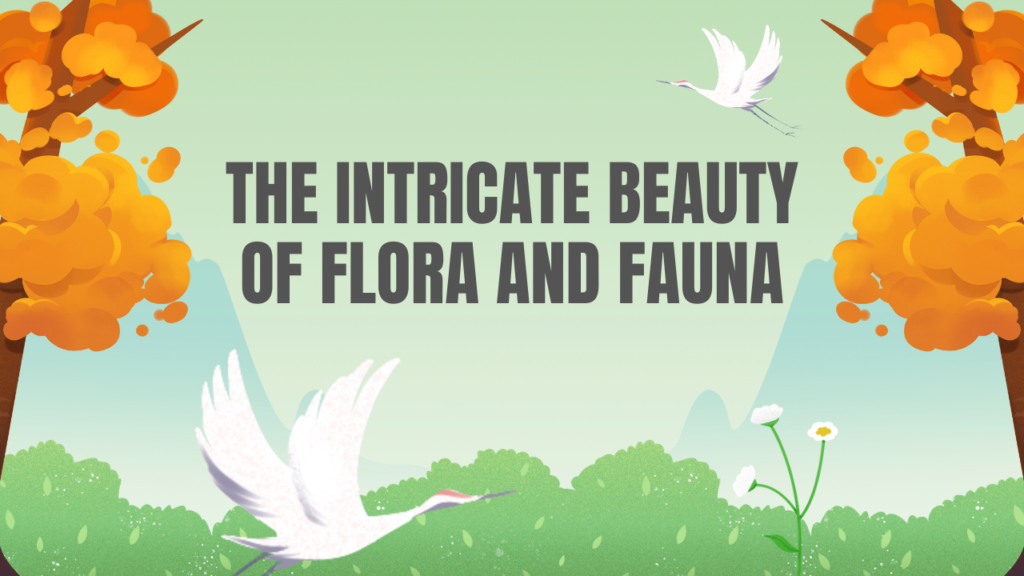The Intrinsic Beauty of Nature: Unveiling the Wonders of Our Planet
Nature, in all its grandeur, presents an unparalleled spectacle of beauty that captivates the human spirit. The intricate tapestry of ecosystems, the mesmerizing landscapes, and the harmonious interplay of flora and fauna evoke a profound sense of wonder and appreciation. This article delves into the intrinsic beauty of nature, exploring its various facets and the vital importance of preserving these natural treasures.
The Diverse Landscapes of Nature

Mountains: Majestic Guardians of the Earth
Mountains stand as towering sentinels, their snow-capped peaks piercing the sky and their rugged slopes offering sanctuary to diverse species. The beauty of mountains lies not only in their sheer size but also in the ecosystems they support. From the lush alpine meadows to the ancient forests at their base, mountains are a testament to nature’s grandeur. The Himalayas, the Rockies, and the Andes are just a few examples of mountain ranges that inspire awe and reverence.
Oceans: The Vast Blue Wilderness
The world’s oceans cover more than 70% of the Earth’s surface, holding mysteries and beauty within their depths. The azure expanse of the sea, the vibrant coral reefs, and the diverse marine life contribute to the oceans’ allure. The Great Barrier Reef, with its kaleidoscope of colors and marine biodiversity, exemplifies the ocean’s splendor. The rhythmic ebb and flow of tides, the gentle lapping of waves, and the breathtaking sight of a sunset over the water are moments of serene beauty that the ocean generously offers.
Forests: The Earth’s Lungs
Forests are nature’s emerald treasures, vital to the planet’s health and an epitome of natural beauty. They are home to countless species of flora and fauna, providing shelter, food, and oxygen. The Amazon Rainforest, often referred to as the “lungs of the Earth,” is a prime example of a vibrant and vital forest ecosystem. Walking through a forest, one can experience the soothing sounds of rustling leaves, the earthy aroma of the soil, and the sight of sunlight filtering through the canopy, creating a tranquil and enchanting environment.
Deserts: Stark Yet Striking Landscapes
Deserts, with their vast stretches of sand and rock, might seem barren at first glance, but they possess a unique and stark beauty. The undulating dunes, the resilient flora and fauna, and the dramatic interplay of light and shadow create a captivating and ever-changing landscape. The Sahara, the Gobi, and the Atacama are examples of deserts that showcase the resilience and beauty of life in extreme conditions.
The Intricate Beauty of Flora and Fauna

Flora: Nature’s Color Palette
The plant kingdom adds a burst of color and life to our planet. From the delicate petals of a rose to the towering majesty of a redwood tree, flora contributes significantly to the beauty of nature. Wildflowers carpeting a meadow, the seasonal spectacle of autumn leaves, and the vibrant hues of tropical blooms are just a few examples of nature’s artistic prowess. Each plant, with its unique shape, color, and fragrance, plays a part in the intricate tapestry of life.
Fauna: The Diverse and Fascinating Animal Kingdom
The animal kingdom is a testament to nature’s creativity and diversity. From the graceful flight of a bird to the powerful stride of a tiger, animals contribute to the dynamic beauty of the natural world. The intricate patterns on a butterfly’s wings, the synchronized dance of a school of fish, and the majestic migration of wildebeests across the African savannah are awe-inspiring sights that highlight the beauty and complexity of life on Earth.
The Seasons: Nature’s Ever-Changing Canvas
Spring: A Time of Renewal
Spring is a season of rebirth and renewal, as nature awakens from the dormancy of winter. Blossoming flowers, budding trees, and the return of migratory birds herald the arrival of spring. The air is filled with the sweet scent of blooms, and landscapes are painted in vibrant greens and pastels. Spring’s beauty lies in its promise of new beginnings and the rejuvenation of life.
Summer: The Season of Abundance
Summer is characterized by long days, warm sunshine, and an abundance of life. Fields of golden wheat, lush green forests, and the sparkling blue of lakes and rivers create a picturesque and lively environment. Summer’s beauty is in its vitality and the abundance of life it brings, from buzzing bees to blooming gardens.
Autumn: A Symphony of Colors
Autumn, with its rich tapestry of reds, oranges, and yellows, is a season of transformation. Leaves change color and fall, creating a vibrant and ever-changing landscape. The crisp air, the smell of fallen leaves, and the golden light of the setting sun all contribute to the nostalgic and serene beauty of autumn.
Winter: A Quiet Elegance
Winter, with its blanket of snow and icy landscapes, has a quiet and serene beauty. The starkness of bare trees, the intricate patterns of frost, and the stillness of a snow-covered world evoke a sense of calm and introspection. Winter’s beauty lies in its simplicity and the pristine purity of its landscapes.
Also Read The ”Bold And Beautiful Recaps.”
The Importance of Preserving Nature’s Beauty
Conservation Efforts: Protecting Natural Wonders
The beauty of nature is not just for our enjoyment but is essential for the health of our planet. Conservation efforts are crucial in protecting these natural wonders. Organizations and individuals around the world are working tirelessly to preserve forests, oceans, and wildlife. National parks, wildlife reserves, and marine sanctuaries are established to protect biodiversity and ensure that future generations can experience the beauty of nature.
Sustainable Practices: Harmonizing with Nature
Adopting sustainable practices in our daily lives is vital in preserving nature’s beauty. Reducing waste, conserving water, and choosing eco-friendly products are steps we can take to minimize our impact on the environment. Sustainable agriculture, responsible tourism, and renewable energy sources also play significant roles in maintaining the delicate balance of our ecosystems.
Conclusion
The intrinsic beauty of nature is a source of inspiration, solace, and joy. From the majestic mountains and vast oceans to the intricate flora and diverse fauna, nature’s beauty is boundless and ever-changing. The seasons add a dynamic element to this beauty, reminding us of the cyclical nature of life. Preserving the beauty of nature is not only a responsibility but a necessity, ensuring that the wonders of our planet continue to inspire and sustain us. As we immerse ourselves in the beauty of nature, let us also commit to protecting and nurturing it for generations to come.
FAQs About the Intrinsic Beauty of Nature
1. What makes nature beautiful?
Nature’s beauty lies in its diversity, complexity, and the harmonious interplay of its elements. The varied landscapes, from mountains and oceans to forests and deserts, each have unique features that captivate the senses. The intricate designs of flora and fauna, the changing seasons, and the sheer scale and grandeur of natural wonders contribute to the overall beauty of nature.
2. How do mountains contribute to the beauty of nature?
Mountains are majestic and awe-inspiring, offering breathtaking views and a sense of grandeur. They support diverse ecosystems, from alpine meadows to dense forests, and are home to various species of plants and animals. The snow-capped peaks, rugged terrains, and serene landscapes of mountain ranges like the Himalayas, the Rockies, and the Andes highlight nature’s splendor.
3. Why are oceans considered beautiful?
Oceans cover more than 70% of the Earth’s surface and hold an abundance of life and beauty. The vast blue expanse, vibrant coral reefs, and diverse marine life contribute to their allure. The rhythmic movement of waves, the soothing sound of the sea, and the stunning sunsets over the water make oceans a mesmerizing aspect of nature’s beauty.
4. What role do forests play in showcasing nature’s beauty?
Forests are vital ecosystems that provide shelter, oxygen, and sustenance to countless species. They are characterized by their lush greenery, diverse plant life, and the tranquility they offer. Forests like the Amazon Rainforest are rich in biodiversity and showcase the vibrant and vital aspects of nature. The interplay of light through the canopy, the sounds of wildlife, and the earthy aromas create an enchanting environment.
5. Can deserts be beautiful?
Yes, deserts possess a unique and stark beauty. The vast stretches of sand and rock, the dramatic light and shadow, and the resilient flora and fauna create captivating landscapes. Deserts like the Sahara, the Gobi, and the Atacama highlight the beauty of life in extreme conditions and the ever-changing patterns of dunes and formations.
6. How do the seasons enhance the beauty of nature?
Each season brings its own distinct beauty to nature:
- Spring: A time of renewal with blossoming flowers and budding trees.
- Summer: A season of abundance with lush landscapes and vibrant life.
- Autumn: A symphony of colors with changing leaves and golden light.
- Winter: A quiet elegance with snow-covered landscapes and serene stillness.
The cyclical changes of the seasons add a dynamic and ever-changing element to nature’s beauty.
7. Why is it important to preserve nature’s beauty?
Preserving nature’s beauty is essential for maintaining the health of our planet. Natural ecosystems provide critical services, such as clean air, water, and food, and support biodiversity. Conservation efforts protect these vital resources and ensure that future generations can experience and benefit from the wonders of nature. Sustainable practices help minimize human impact and promote a harmonious relationship with the environment.
8. How can individuals contribute to preserving nature’s beauty?
Individuals can contribute by adopting sustainable practices in their daily lives, such as reducing waste, conserving water, and using eco-friendly products. Supporting conservation organizations, participating in local environmental initiatives, and making responsible choices in travel and consumption can also have a positive impact. Educating others and advocating for policies that protect natural resources are additional ways to help preserve the beauty of nature.
9. What are some examples of conservation efforts to protect nature’s beauty?
Examples of conservation efforts include the establishment of national parks, wildlife reserves, and marine sanctuaries. Organizations like the World Wildlife Fund (WWF), Conservation International, and the Nature Conservancy work globally to protect endangered species and habitats. Local community initiatives and government policies also play crucial roles in conserving natural landscapes and biodiversity.
10. How does nature inspire human creativity and well-being?
Nature has long been a source of inspiration for art, literature, and scientific discovery. The beauty of natural landscapes, the intricate patterns of plants and animals, and the rhythmic cycles of the seasons stimulate creativity and imagination. Exposure to nature also enhances well-being by reducing stress, improving mood, and promoting physical health. The tranquility and beauty of nature offer solace and a sense of connection to the larger world.

Danke für diesen wertvollen Beitrag, wirklich sehr hilfreich.
Vielen Dank für dein Feedback! Es freut mich, dass du den Beitrag hilfreich findest. Bei weiteren Fragen stehe ich gerne zur Verfügung!
Très bon post, j’adore la clarté de tes explications.
Merci beaucoup ! Je suis ravi que les explications te plaisent. N’hésite pas à poser des questions si tu en as !